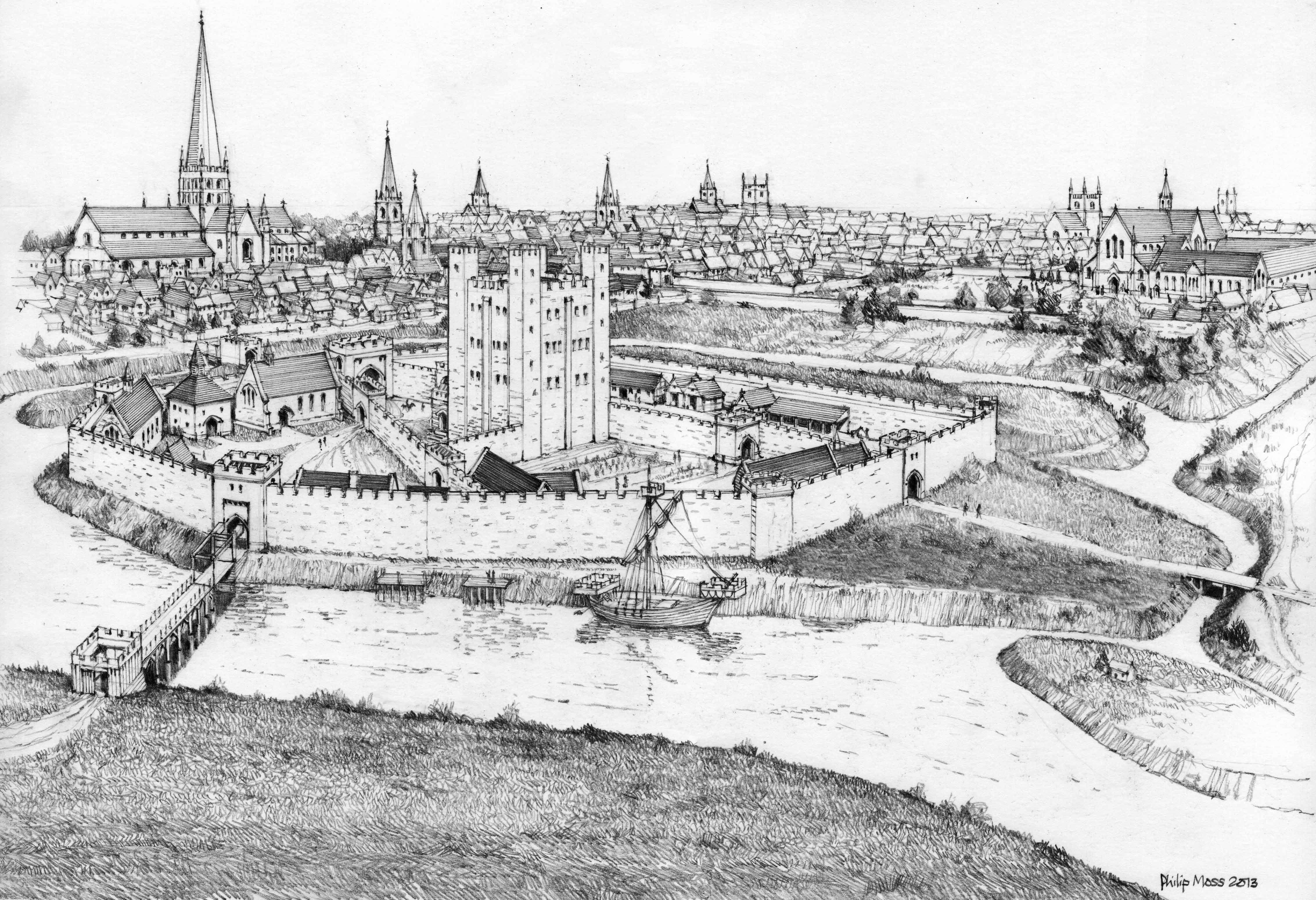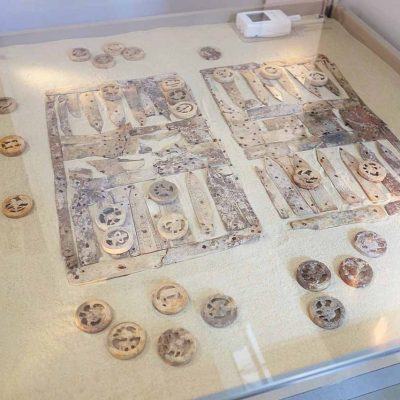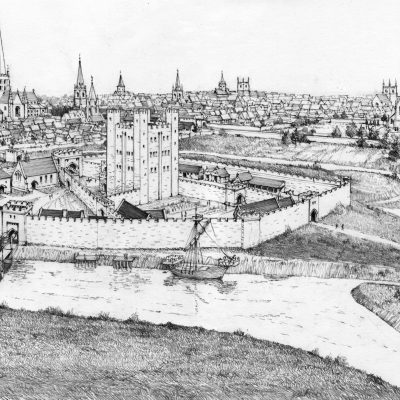

BAAS was delighted to welcome Andrew Armstrong, Gloucester City Archaeologist to give our annual Leslie Grinsell Memorial Lecture on recent excavations at Gloucester Castle.
There are two castles in Gloucester and, as in common with Bristol, you can no longer see where it was, as a prison was built on top. It is in the western part of Gloucester. Gloucester was important as a port from Roman times. After the Anglo-Saxons it was an important centre. After William the Conqueror it became a royal possession and the castle was built soon after the invasion. It has a ringwork structure with a ditch which runs from one point of the Roman wall to the other and is inside the city walls.
The first owner was Roger de Pitres, the first post-Norman Conquest Sheriff of Gloucestershire. The castle was extended and people were dispossessed. It was a simple motte and bailey castle. Unfortunately in the 1930s, much of the old motte was removed by the Roman Research Group in order to reach the Roman levels.
In the rubbish pits archaeologists found a tabular gaming kit. It had a wooden base and was like Backgammon. The pieces were made from the antler of red deer. It is unique and is the only complete set ever found. This castle went out of use by AD1120.
The new castle was built on land west of the old castle and built on the river to control trade.
Henry I acquired the land and Walter, son of Roger (1110 – 1120) oversaw the building work. In 1216 Henry III had his coronation in Gloucester. He was interested in the city and built three chapels, two Great Halls and stables. By the time of Richard III it became a prison and only the keep was retained. In 1646 the castle was part of the Civil War defences.
In 1212 Kip’s map shows the Keep surrounded by beautiful gardens and it was a ‘good’ prison if you were incarcerated there. By 1791 the Keep was pulled down. In 1796 a new prison was built which was not a ‘good’ prison.
Hurst postulated where the old castle had been from maps and that it had defensive ditches. In 1985 the Ministry of Justice made a new entrance, dug holes and found carved 12-13th Century stonework, but they poured concrete over it and drove piles down through it, effectively destroying it.
In 2015 archaeologists investigating the Prison site ahead of a new development re-discovered the castle. Their evaluation trenches found the edge of the castle ditch and remains of the foundations of the prison at 2m below ground level. They also found the wall of the inner bailey, the prison wall, a drain and a cobbled surface. Also revealed was a 3m wide stone wall which was the corner of the Medieval Keep. There was a vast amount of debris 60cms deep. There were 2m of standing walls on the site, but they could not find the floor surface. They found Civil War ditches together with fulling pits further north near the castle ditch. East of the castle was a trench and a line of the castle defences.
A further trench found Medieval and Post Medieval structures with massive stonework. This was a later repair (20cms deep) to the west wall of the keep (1336). More trenches revealed a causeway or bridge between the inner and outer defences of the castle. Overall, there was a much larger Keep and bigger bailey than previously thought. Barbican Hill is the motte of the Norman Castle. The question to be asked is what function did it have as part of the new castle? Unfortunately, as mentioned above it was dug away by the Roman Research Group.
A bore-hole survey was carried out in the raised area of lias clay, on a slight promontory where first castle was built near the river. This was quite a prominent place on the River Severn. The Keep would have rivalled that at Rochester and sadly today, it has all but disappeared.


Tabular set Reconstruction of Gloucester Castle from river.
(https://commons.wikimedia.org/) (Image: Phil Moss)
